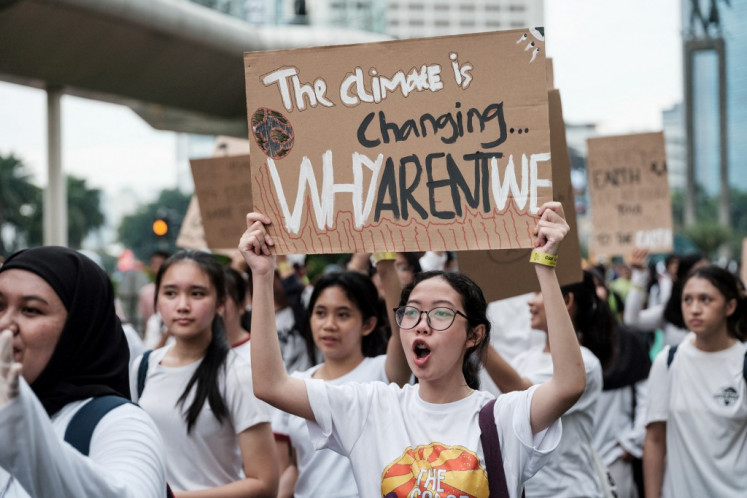Govt expects $56.5m from new oil blocks
The government expects to bring into state coffers at least US$56
Change Size

The government expects to bring into state coffers at least US$56.5 million in signing bonuses from 24 new oil and gas blocks put on offer on Tuesday, said a senior official.
The payment is the bonus paid by oil and gas contractors to the government when the companies secure rights to explore and develop the blocks.
The bonuses go to the state even though later exploration activities may find some of the blocks are not viable economically.
Evita H. Legowo, director general for oil and gas, said Tuesday that the minimum signing bonuses were different for each block, depending on their potential reserves.
“If the early survey found the indication that the blocks have big reserves, then government sets a higher minimum signing bonus,” she said
On Tuesday, the government offered 24 oil and gas blocks; 17 blocks being offered under a regular tender and the remaining seven under a joint study mechanism.
Blocks offered under the regular tender included: Tomini Bay I-V; Gorontalo Tomini I-II; North Bone; Kolaka Lasusua; Kabena; Jampea; Buton III; Menui Asera; Morowali; Sula I-II, and the Bird’s Head block.
Blocks offered under the joint study mechanism included: Kubu; North East Ogan Komering, Offshore West Java; Blora; North Makassar strait, East Simenggaris; and the Digul block.
Minimum signing bonuses set by the government for each block range between $1 million and $5 million.
The Tomini Bay I-V blocks and those at Gorontalo Tomini I-II stand out as being among the most expensive blocks to acquire. Government has set the highest minimum signing bonus of $5 million on each of these blocks because of their potentially high reserves of oil or gas.
“We set the highest minimum signing bonus for these blocks, because the areas are very promising. We estimate the blocks contain huge reserves especially gas reserves. We do encourage all oil and gas companies to develop these blocks,” said Evita, adding that this initial information was based on the government’s own initial survey.
Most of the blocks offered on Tuesday was located in the eastern part of Indonesia, meaning that oil and gas contractors must usually spend more on drilling costs.
Average drilling costs for “wild cat” wells offshore eastern Indonesia can be up to between $40 and $50 million, while in the western part of Indonesia the equivalent drilling cost per well is only between $7 and $8 million, oil and gas upstream director Edy Hermantoro said last month.
Evita said the government asked for a lower production split for the blocks located in eastern Indonesia.
“The split is 65 percent for the government and 35 percent for contractors. Normally the government takes between 80 percent to 85 percent,” Evita said.
She added that the lower split for the government was an incentive for oil and gas companies to operate in the more difficult conditions in eastern part of Indonesia.
Currently, there are 190 national and international oil and gas contractors operating in Indonesia.
As many as 51 are working in the production stage, 13 are still carrying out development planning, and the remaining 126 are still only in the exploration stage.
The government has been auctioning new oil and gas blocks, as part of its efforts to boost oil output amid a declining trend in oil production during the past five years.
This year, the government has set an oil lifting target of 960,000 bpd. As of April, the realization of oil lifting was at 956,000 bpd, less than the initial target, Evita said.
For gas, the government has set a production target of 7.66 billion British Thermal Units of gas (Btu) per day, up from this year’s target of 7.53 Btu per day.
It has set an oil and condensate output target of 1.05 million barrels per day (bpd) for next year.









